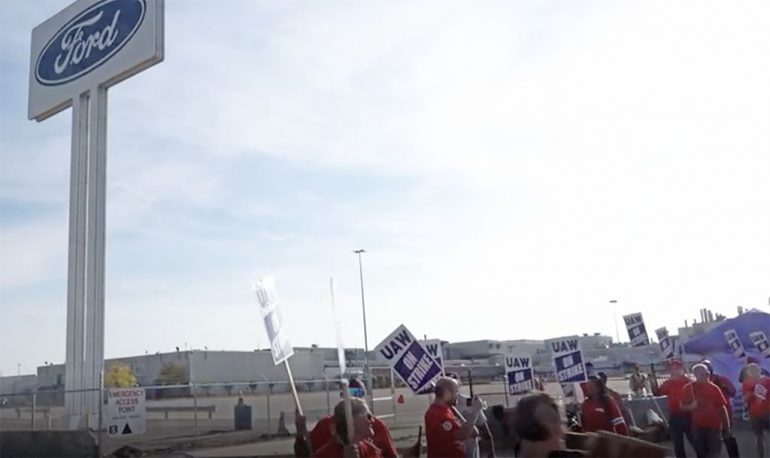
Ford Motor announced on Sunday that while some progress has been made in negotiations with the United Auto Workers (UAW) union, there are still “significant gaps to close” on key issues before a new labor agreement can be reached. In a statement issued late in the evening, Ford acknowledged that these issues are interconnected and need to be addressed within the framework of an overall agreement that supports the mutual success of both parties.
While the UAW had mentioned “real progress” in talks with Ford on Friday, they did not immediately respond to Ford’s statement regarding the remaining gaps in the negotiations. This suggests that there may still be differences in perspective between the two sides on key economic matters.
Also, don’t forget that you can get discounted new car pricing with a free quote through qualified local dealer partners.
Interestingly, the UAW has taken a different approach with General Motors and Chrysler-parent Stellantis. They have expanded their strikes to include 38 parts distribution centers across the United States. It remains unclear whether main table bargaining occurred with these automakers over the weekend. This divergence in strategy highlights the complexity of labor negotiations within the automotive industry.
The backdrop to these negotiations is the unprecedented simultaneous strikes that the UAW initiated on September 15, targeting one assembly plant each of the Detroit Three after the previous four-year labor contracts expired. The addition of GM and Stellantis facilities to the strikes on Friday brought the total number of striking workers to approximately 18,300, with 5,600 workers joining in as a result of the recent developments.
UAW President Shawn Fain acknowledged that Ford had improved its contract offer, including increasing profit sharing and allowing workers to strike over plant closures. However, he also emphasized that the union still had significant issues to address. One of the key points of contention appears to be the disparity in wage and benefit packages between newer and more senior employees.
The overall compensation package is another area of disagreement. While the Detroit Three automakers have proposed a 20% raise over 4.5 years, the UAW is seeking a more substantial increase of 40%, along with a reduction in the workweek to 32 hours, the reintroduction of defined benefit pensions, and the elimination of wage gaps.
These labor disputes have had significant implications for the automotive industry. General Motors was forced to idle its Kansas car plant due to a parts shortage resulting from the strike, leading to the temporary furlough of 2,000 workers in Kansas. Similarly, Stellantis had to temporarily lay off 68 employees in Ohio and expects to furlough another 300 workers in Indiana due to the ongoing strike.
The involvement of political figures adds another layer of complexity to the situation. President Joe Biden has announced plans to visit Michigan to express his support for the striking workers and visit a UAW picket line. On the other hand, former President Donald Trump, who is seeking re-election, is set to speak in Clinton Township, Michigan, about the UAW strike. Their involvement underscores the significance of these labor negotiations in the broader political and economic landscape.
Source: Reuters